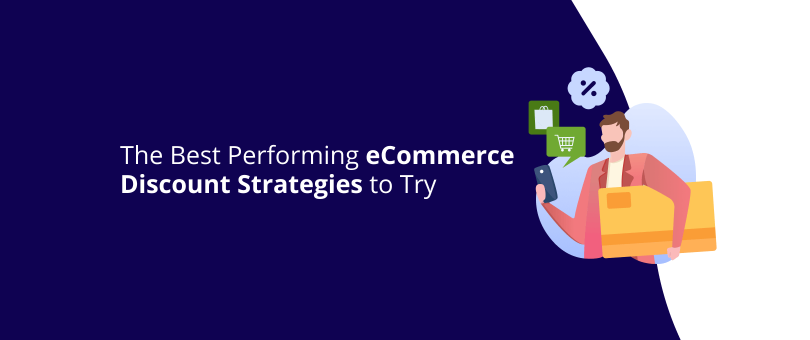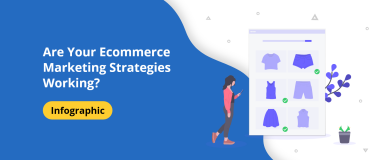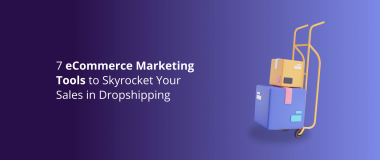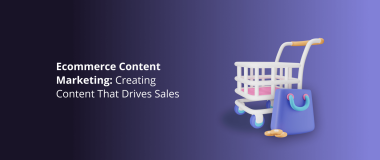Are you looking for a way to give your eCommerce sales a boost? If so, has discount strategy crossed your mind? When employed wisely a discount campaign can yield a healthy increase in revenue. But you need to pay attention – if handled poorly, it can devalue your bottom line.
Choosing the most appropriate discount strategy can be tricky and the line between sinking or sailing is quite thin. There are times when discounts pay off, and others when they can do more damage than good. The right planning can help you to maximize sales, boost conversions, and overall increase your revenue. When executed in the wrong way, however, it can have adverse consequences that would not only affect your earnings but could also devalue your brand.
To make the most out of promotional pricing for your eCommerce business, it’s really important that you know when and how to use the different types of discounts effectively. Timing is everything, so when you put in the right effort at the right moment you will be able to drive customer loyalty and increase customer acquisition. However, if used too often discounts can reduce profits and attract mainly price-driven customers. If shoppers start coming to your online store only expecting a discounted price, it will be difficult to convince them to pay full price later on.
The right approach to discounting depends on what you sell, who you sell to, and what is experience you wish to create. So, in this article, we’ve prepared a guide of the best performing eCommerce discount strategies to try next.
We’ll discuss what is the psychology of discount pricing, show an overview of the most common strategies used and give you some tips on how to make discounts work for you.
Read on and find out how to be successful using these special offers.
The Psychology and Value of Discount Strategies in eCommerce
To remain competitive with your offer, you have to consider consumer behavior and appeal is a key requirement for the effectiveness of many marketing strategies. Your willingness to offer discounts greatly impacts customers, more specifically their interactions with your brand and products.
According to Harvard Business Review, people are generally more inclined to purchase when they are aware of the cost of a product/service. Consumption is driven more by a product’s perceived cost rather than its actual one. The perception is greatly influenced by the way in which the offer is priced. Hence, when a discount is used, more attention is drawn to the product.

This process is linked with a few important psychological drivers, which include:
- Classical Conditioning – When customers expect to be offered a discount they can become used to it. You should be careful how frequently you place promotions, so you don’t risk having your audience shop from you only when you have them.
- Perception of Quality – Quality is not usually associated with reduced costs, so if you’re a brand that offers luxury or premium products, with perceived high quality, make sure that when using discounting you’re not reducing the luxury element of perception.
- Social Influence – People care what others think and they like bragging when they get a good deal on something compared to someone who paid in full for the same item.
- Scarcity – A discount that is tied to urgency is very effective. The fear-of-missing-out (FOMO) is real, so when a shopper is faced with a “Now or Never” situation they are often convinced to place their order.
- Exclusivity – You can always find a reason for reducing your prices – end of the season, an anniversary, arranging a special price with your provider, someone’s birthday. The more special your reductions feel, however, the more customers will want to benefit from them.
- Perception of Saving – Most people associate discounts with saving money, so if you want to really draw their attention to your offer, make it stand out. Be careful with how you display the new price and evaluate whether it would be better to use a percentage (20% off) or absolute value (save $20).
Read also: How to Harness the Power of Impulse Buying in eCommerce
The Most Common Types of Discounting
There are seven basic categories of discount pricing and knowing them well can help you decide which particular discount campaign to use.
1. Volume Discounts
Volume discounting is a strategy by which the price of items is decreased when larger quantities are bought in one go. This method is often used to convince customers to buy in bulk and it can be structured in a few different ways.
- Setting different tiers: Tiering means offering a specific discount for a number of items that fall under that particular tier. The more items purchased, the larger the discount is.
- Setting a threshold: A discount is applied only after a predetermined threshold is reached. For instance, if the threshold is 300 products, a volume discount would be applicable to the 301st item. The buyer would still have to pay full price for the first 300 units.
- Setting separate rates for units: Discounted prices are offered based on the number of items per unit. For instance, a 5% discount rate could be applied to every package of 15 units, and a discount of 10% could be applied to a package of every 30 units.
This type of discounting is often used in B2B. Many businesses prefer to buy larger quantities of a product, as fewer costs will be involved when another customer accesses their product.
2. Seasonal Discounts
Seasonal discounts referred to as special offers are linked to holidays or key events. Their overall goal is to increase traffic, and, of course, drive up revenue.
To leverage seasonal discounts effectively it’s essential that you:
- Know which seasons would suit your business best.
- Pick the items that would perform well.
- Take the opportunity to encourage customers to repeat their purchase.
- Create a buzz around your offer.
In addition to boosting sales, these promotional prices can also help foster customer loyalty, drive brand awareness, and build a healthy cash flow during times when there’s less demand. They can give you a jumpstart on sales at the start of peak seasons, or promote new ‘in season’ products. And, they can also help generate lots of excitement, so you can clear out old inventory and prepare for the new season.
3. Promotional Discounts
Promotional discounting is a strategy that brands use when they want to temporarily reduce the price of a product to attract prospective customers. When a brand lowers its pricing for a short period of time, it creates scarcity, thus artificially increasing the value of the items offered.
By incentivizing cost-conscious consumers to buy, this discount approach supports your customer acquisition efforts. What is more, it can boost short-term cash flow, build customer loyalty and increase revenue.
But be very careful not to use this discount strategy recklessly. Promotional discounts should better be short-lasting and focused on a special sale. Frequent promotions can signal to your customers that they should wait for the next deal to buy from you.
There’s nothing wrong with your buyers expecting a Black Friday sale, for example, but the important thing is not to have promotions as the main part of your marketing and sales strategy.
4. Loss Leaders
Loss leader discounting is a strategy where a vendor selects a few items, (called loss leaders) and sells them at a very low price so that once buyers come into their store, they will make other purchases. The profit from the additional purchases is intended to make up for the lower price of the loss leader.
For example, Gillette often sells their razor blades at a low price and since customers will need more of them in the future they will return. What is more, because a blade is not the only thing needed for shaving, Gillette has a whole range of products to complement the razors.
The main goal of this strategy is to attract customers by offering up prices they won’t be able to find anywhere else. So, when using a loss leader discount a common good practice is to have the complementary goods in one single location. This way shoppers won’t have to switch from one web store to another, bringing great benefits both for them and the vendor.
Something to keep in mind is that loss leaders should be familiar with items that shoppers use frequently. To keep customers coming back for more, make sure to vary them, so they look forward to your next amazing offer.
5. Buy-One-Get-One (BOGO) Sales
The buy one get one (BOGO) concept is quite a popular discount pricing approach that helps businesses get rid of excess inventory faster, while still remaining profitable. BOGO helps with incentivizing clients to buy something and get the other item at a discount. Sometimes it can be advertised as buy one get one free, but more often it’s buying one item and getting the second one with a 50% discount.
The BOGO method leverages the customer’s perception of saving. Therefore the most important part is to have a clearly stated, compelling offer so that customers feel like they are getting a really good deal. After all, who doesn’t like getting two for the price of one or one and a half?
6. Loyalty Discounts
Loyalty discounts present an amazing opportunity for any brand to strengthen the bond they have with their best customers, to encourage them to make more and larger purchases.
The key aspect of this strategy is to make it available only to your loyal shoppers. These can include long-time customers, repeat shoppers, users with membership or other definers of loyal clients.
As part of their loyalty program, many businesses provide some form and type of loyalty card in order to track their customer’s purchases. This way brands can obtain a much better insight into their clients’ preferences and thus provide more customized offers.
7. Membership Discounts
You can take your loyalty discounts even further and offer specific membership benefits. These can be reserved for a specific group of members like Amazon Prime members or the American Association of Retired Persons (AARP).
Memberships can include individuals who qualify as senior citizens, military veterans, or some other designator, presenting yet another opportunity to show appreciation for your customers.
8. Discount Codes
Discount codes, or promotional codes, are a pricing strategy that online stores often use to encourage purchases by providing a special code that can be applied to individual products or an entire order.
The discount could be a specific monetary amount or a percentage, аnd the code itself can be used for a predetermined purpose, for example, a holiday marketing campaign or to show appreciation of a shopper’s time as a loyal customer.
Promo codes work really well with both returning and new customers and allow shoppers to get their desired products at a lower price while retailers generate more revenue.
How to Choose the Best Discount Strategy?
When deciding on which would be the best performing discount strategy for your eCommerce business there are three key aspects to consider.

First, you need to evaluate your competitive advantage. Think about whether you compete based on price or quality.
Second, consider what kind of items you offer and which of those sell the most. For example, if your business offers everyday items that generally compete on price, then frequent discounts on different items could work well to drive up sales. Alternatively, if your eCommerce store offers high-quality goods, you might not want to offer discounts too frequently, so that you don’t devalue your brand.
Last, but not least, it’s important to focus your discount strategies and tactics on particular items, not on the entire inventory. For example, if you’re hosting a mid-season sale you should only discount some product from a particular line, but not everything you have in the store. At the end of the day, consumers will almost always be looking for value that is beneficial to a higher ROI.
Read also: Essential Tests for Your WooCommerce Store
Conclusion
There’s a lot going on behind the science of choosing what type of discount strategy to adopt. Choose wisely and you will be able to drive up your sales revenue, boost your conversions, and increase your customer base and loyalty. Choose poorly and you risk not only losing money but also devaluing your brand.
Marketing the most out of your discounting approach requires careful planning and evaluating your options. You don’t want to give your customers the wrong perception. Keep in mind the psychological effect of different strategies, how your brand competes in the market, and which items would make the most sense to be discounted, when and how often.




